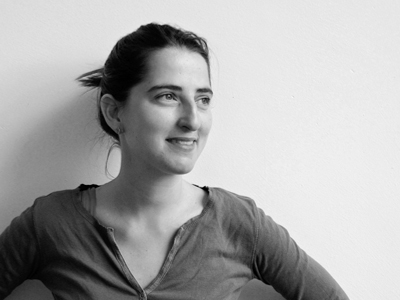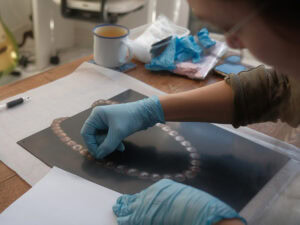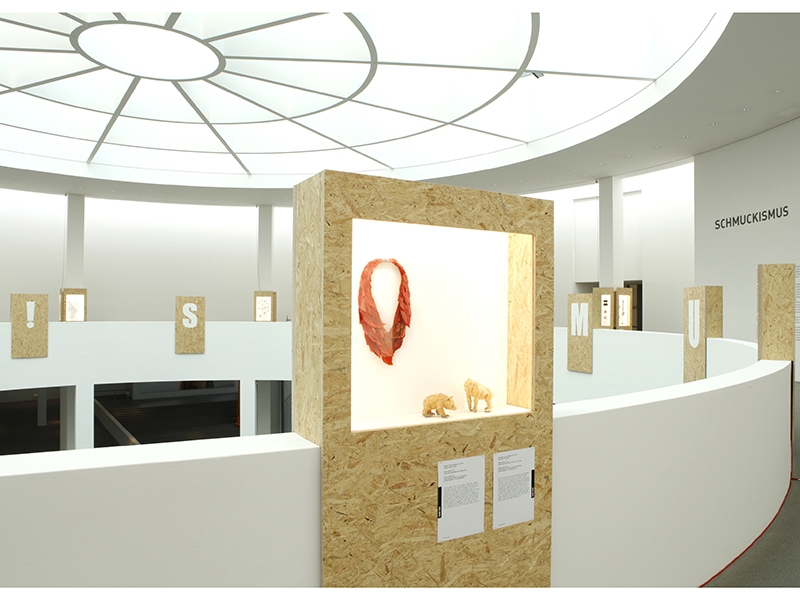
Vivi Touloumidi: You have clarified your intentions behind the title of the show on several occasions. I wonder if the usage of an “-ism/-ismus,” a known strategy in the history of art, is an invitation to rethink divisions and hierarchies between artistic disciplines.
Karen Pontoppidan: The title refers to the use of “isms” within the development of the fine arts, and as such the exhibition places itself in this context, not only through the title but, as I believe, also through the work presented. However, I’m not very interested in the usual discussions of why the fine arts don’t accept jewelry. Instead, I focus on developing jewelry as an art form and on deepening the discourse this implies.
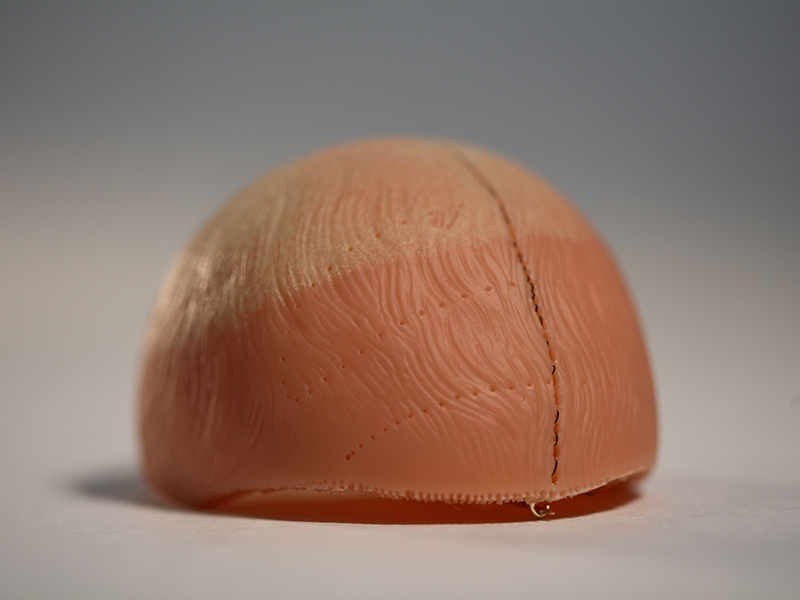
Apart from being the curator, you also designed the exhibition yourself. Could you please talk more about the material choices, your decision to include quotes you’ve collected, and the overall presentation of the show?
Karen Pontoppidan: First of all, I would like to stress that Die Neue Sammlung/The Design Museum was extremely generous by giving me the possibility to have showcases built, and in general by making this exhibition possible. I am very aware that it’s a huge privilege to be able to make such an exhibition without bigger limitations.
In the design of the exhibition, several considerations came into play: the outer frames, such as the space in itself and wanting to exhibit 30 different positions, but also the conceptual frames, which meant that the exhibition design should reflect something temporary instead of becoming some kind of manifesto. Also the aspect of pointing toward the narratives of the jewelry, as a source of information, were all important to me.
The showcases were inspired by the places where information or statements are seen on the streets of Munich. Partly in official bulletin board cases placed in front of public buildings and partly by individual citizens stapling printouts on the rough walls of building sites. Combining the “official” with the “anarchistic” seemed a good starting point.
In the entrance of the exhibition, I wanted to add other forms of statements, which should function as stepping stones for an audience less familiar with contemporary jewelry in a sociopolitical context. One part presented here is an incredible collection of political buttons (collected by Paul Derrez and Willem Hoogstede since the early 1970s) and another part is a series of quotes from various theoretical discourses concerning jewelry and body appearance in society. The quotes are mainly by anthropologists, philosophers, or archaeologists, and I wanted to show that the discourse of jewelry and appearance is not only of interest within the defined jewelry field, but the subject of many fields. The third element is a piece by the Austrian artist Brigitte Lang, which was made in 1982 and which is placed in a fine art context. Adding this piece to the exhibition is a reference or reminder of the many great art pieces that have already broken through norms in the past.
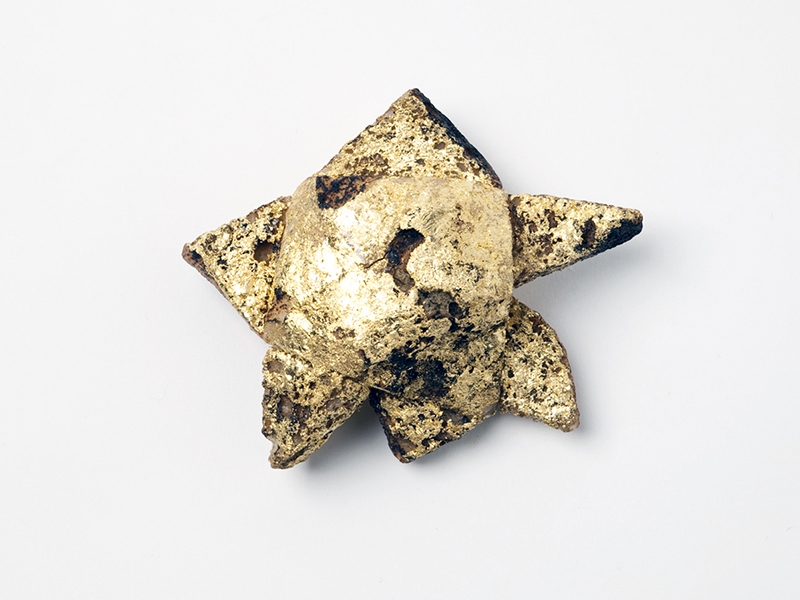
Please talk about your curatorial approach of allowing each artist to choose one additional piece of their own for the show.
Karen Pontoppidan: The concept of the exhibition is to place a very specific lens on the pieces shown: that of jewelry in a sociopolitical context. I am however aware that this lens might not be the sole intention of the artists participating. I therefore asked each artist to add a new piece, to make a comment according to their reflection of jewelry in a sociopolitical context. By doing so, I did make my work as curator more difficult, since I had to design the showcases before knowing the exact work that would be exhibited. But more important for me was that the exhibition gained through the wider selection of works. Simultaneously letting the artists add work of their own choice is a way of challenging my “privileged voice,” which is an attitude I find extremely important in any sociopolitical discourse.
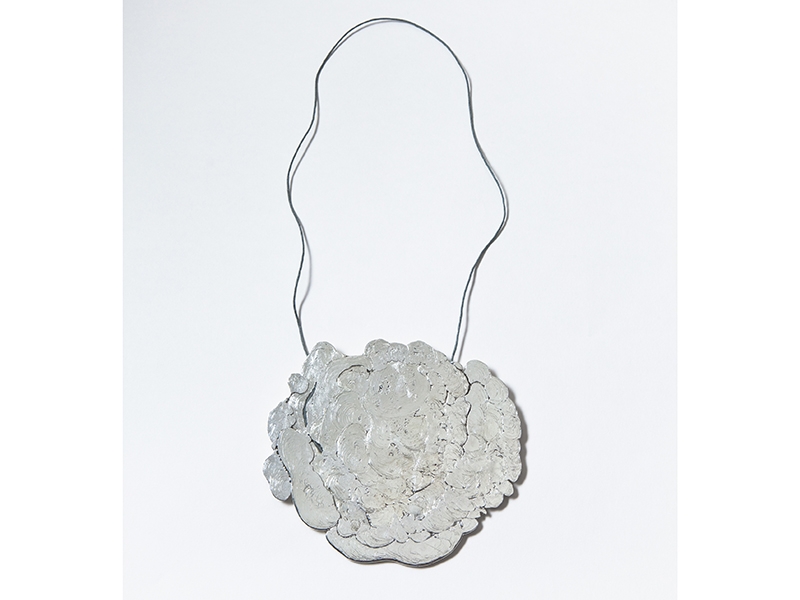
One of jewelry’s great advantages as a medium is to carry one’s individual statements into the public realm. The body plays a vital role in this. Yet even though Schmuckismus highlights the social value of adornment, the gesture of wearing is absent from the exhibition and the catalog. Can you talk more about this decision?
Karen Pontoppidan: Jewelry is such a great medium for expressing sociopolitical thoughts, exactly because it will be worn on someone’s body! But this “someone” can never be neutral; rather, the person wearing the piece becomes part of the narratives communicated. In order to present the work as relevant to the biggest possible audience, I wanted to not influence the narratives of the works by choosing specific people to wear them. Whoever I would have chosen, the age, skin color, gender, etc., of that person would have influenced the perception of the pieces. My focus with this exhibition was not on showing an audience how to wear contemporary jewelry; it was a focus on why to wear!
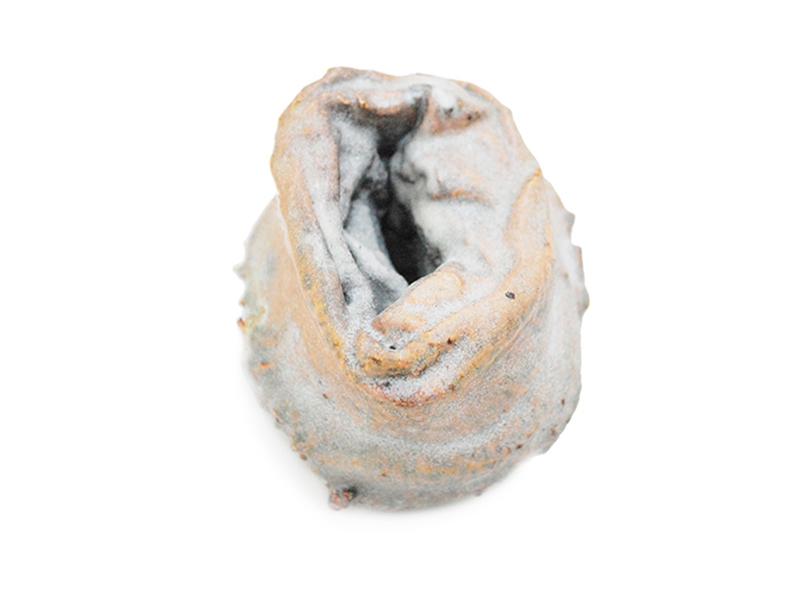
Gender has been a crucial theme in your practice as an artist. When jewelry is created within a political context, not necessarily of gender-specific focus, does it tend to become more “unisex”?
Karen Pontoppidan: That’s a difficult question to answer, since it could imply that artistic jewelry in general would be less “unisex” than sociopolitical jewelry, which I don’t believe. I think that artistic jewelry mostly aims to be “unisex” unless the narratives of the piece in question are specifically telling otherwise. Clearly, mainstream jewelry is mostly gendered. An interesting thought is therefore whether a political context can make jewelry appealing for a group of people who would otherwise not wear something. Looking at the use of political buttons, this is true.
On the other hand, artistic jewelry tends to demand a great commitment of its wearers (on many levels, such as self-confidence, physically, but also economically) and therefore appeal to quite an exclusive circle, which makes it less likely that this circle will be enlarged by pieces also demanding a willingness for societal discourse.
However, I strongly believe that people in general are searching for mindfulness, and that a need exists for jewelry that approaches the issues of contemporary Western society. In this context, the jewelry shown in the exhibition must be placed beyond gender-specific jewelry traditions.

How important are aesthetics within a practice of sociopolitical commenting in jewelry?
Karen Pontoppidan: A specific aesthetic expression is a tool that an artist uses to communicate the narratives of a piece. Similar to choice of material, an artist can through aesthetic choices set a series of associations or references in the mind of the viewer. Since jewelry in general is often related to mainstream concepts of beauty, choosing a different aesthetic expression is an effective means of communication, but it can also lead to a quick rejection of the piece. At the same time, a mainstream choice of aesthetics within jewelry can often make other narratives intended by the artist become obsolete.
I think that the aesthetic expression of the pieces shown in the exhibition balances this challenge well. Some pieces play with known jewelry aesthetics, others confront viewers with rather unusual choices, but in all the pieces the narratives are supported by the aesthetic expressions of the works.
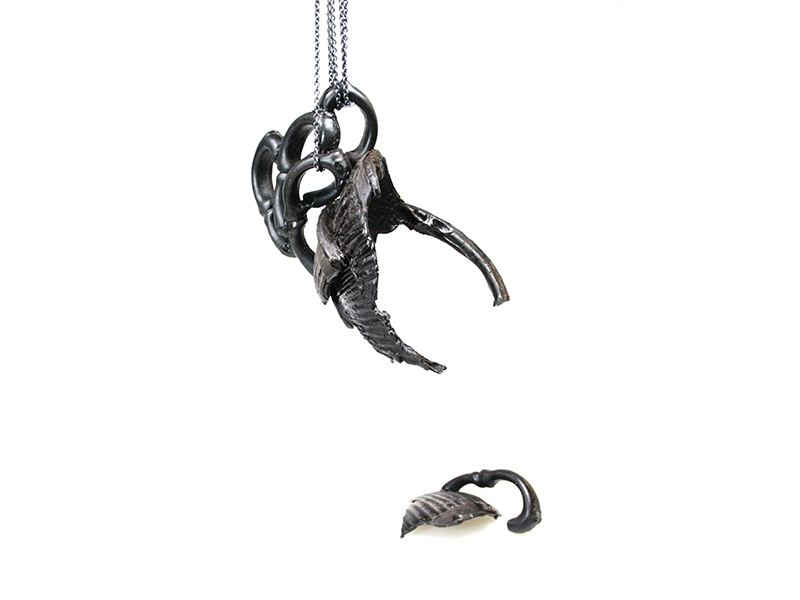
Ιn relation to the previous generation of jewelry artists, what did the generation of Schmuckismus artists further allow on the body? And what is the relationship of this current wave of makers to tradition?
Karen Pontoppidan: The starting point of the exhibition was the observation that the current generation of makers uses jewelry as an obvious medium for social discourse, which I haven’t seen as clearly within former generations. There have, of course, previously been works within the jewelry field that had sociopolitical narratives, but often those pieces were anchored in a reflection of jewelry, hence based in commenting on jewelry traditions (for example referring to diamonds, or pearl necklaces, or wedding rings).
Within the current generation of artists, this “jewelry reflection” is not a main vehicle for the narratives; instead it seems as if the format of jewelry has become self-evident as a vehicle for expressing artistic thoughts. I consider this development extremely important, since it’s part of the process of freeing jewelry from its narrow goldsmithing tradition and letting it become a relevant form of art.
Schmuckismus is a term invented by you to coin a specific phenomenon that has been going on for a while now within the field. How did this understanding influence you as an educator?
Karen Pontoppidan: As an educator, I understand my assignment as twofold. Simply explained, I support the individual development of the students and I support the discourse within the field. Both of these assignments influence each other, since the general discourse will benefit the students and the work of the students will benefit the general discourse. The subjects I engage with as an artist are also reflected in my work as an educator. My main interest is to examine the relation between jewelry and society, and to do so in the awareness of general social issues, e.g., gender, ethnicity, etc.
However, since art is a reflection of the society in which it appears, many different approaches to making art must coexist in order to make a profound reflection. My approach (such as in the exhibition Schmuckismus) is therefore by no means a kind of dogma for the students, but rather a tool for them to reflect on their own approaches and to make informed choices for whatever focus they choose to have within the large field of contemporary jewelry.

What did you learn from this experience of being a guest curator?
Karen Pontoppidan: On a more obvious note, I got a much deeper insight into the work of a great institution such as the Pinakothek der Moderne. I gained a deepened insight into ways of communicating with a broad audience—and to some extent have been surprised by how positively visitors responded toward the complexity of the work shown. The challenge of writing the concept for the exhibition, and not less the challenge of writing short explanations of my choices for each artist, have helped me to formulate my interest in jewelry more clearly. And properly the most important benefit of making this exhibition: It has helped me to understand how privileged I am in my position and how I can use this privilege better for the development of the field and for supporting other artists.
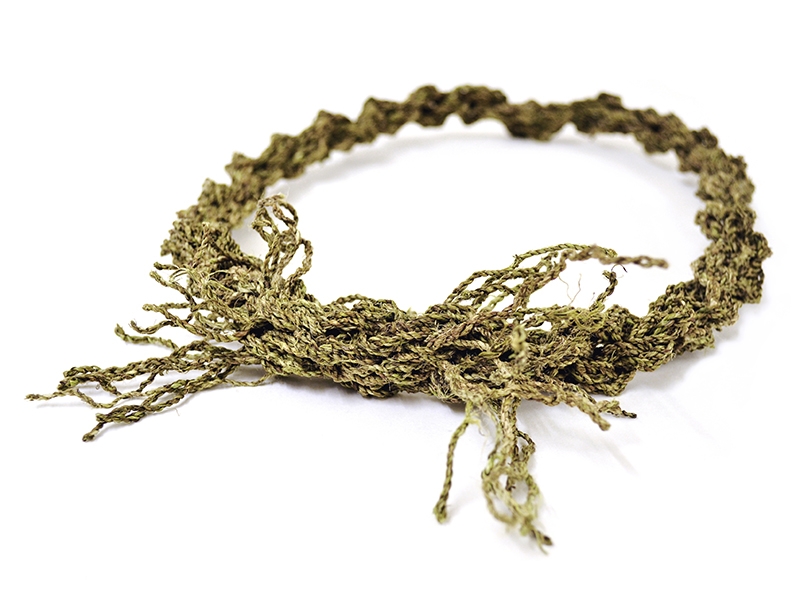
What are you reading at the moment, either for pleasure or for research?
Karen Pontoppidan: Since the exhibition touched upon issues of colonialism, I’m at the moment educating myself further on this subject in relation to objects and materials. Right now I’m going back and forth between three books: Entangled Objects, by Nicholas Thomas; Colonialism and the Object (edited by Tim Barringer and Tom Flynn); and Slavery in Small Things, by James Walvin. Although I’m a jewelry maker at heart, I’m busy right now thinking about the political weight of everyday objects in general!
Thank you!

